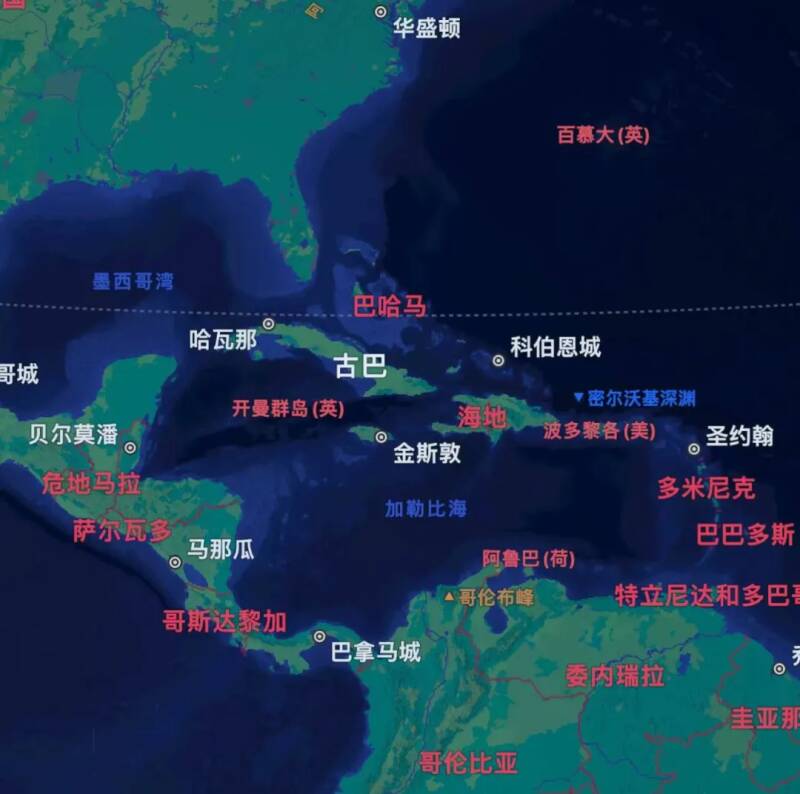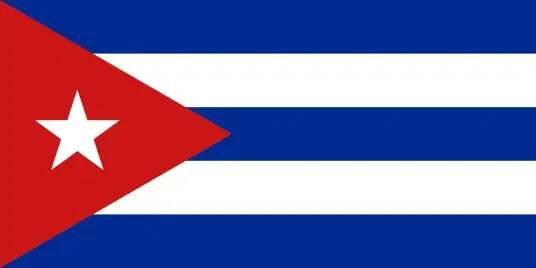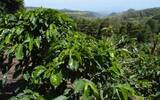Introduction to varieties in Cuba's coffee producing area, an island country in North America
When it comes to island coffee, many people will think of Jamaica Blue Mountain or Hawaiian Kona coffee, while there are many islands in the Caribbean whose soil and growth conditions are very suitable for growing coffee, so there are many coffee producing countries in the Caribbean, such as Jamaica, Cuba, Haiti, Dominica and so on.
Cuba Cuba
The Republic of Cuba (The Republic of Cuba), whose name comes from the Taino language "coabana", means "fertile land". Cuba is located at the entrance to the Gulf of Mexico in the northwest of the Caribbean Sea in North America, facing the United States across the Strait of Florida in the north, 140km from Jamaica and 210km from Mexico in the west, covering an area of 109900 square kilometers.

The Cuban flag is rectangular, with red equilateral triangles on one side and a white five-pointed star on one side. The right flag consists of three parallel blue wide stripes and two alternate white wide stripes. Red triangles and stars are symbols of secret revolutionary organizations in Cuban history, symbolizing the blood of freedom, equality and fraternity patriots. The five-pointed star symbolizes that Cuba is an independent ethnic group, three wide blue stripes indicate that the Republic is divided into eastern, western and central states, and white stripes indicate that the Cuban people have a pure purpose in the War of Independence.

Cuba is composed of more than 1600 islands such as Cuba and Youth Island. it is the largest island country in the West Indies and has many volcanoes. Among them, the plain accounts for 75% of the total area, the northwest, central and southeast are plateaus and mountain areas, of which Turkino is the highest peak in the country, 1974 meters above sea level, accounting for 18%, and hills and marshes in the west account for 7%.
Most of Cuba has a tropical steppe climate, with annual dry seasons (November to April) and rainy seasons (May to October), with an annual average temperature of 25 ℃ and annual rainfall of more than 1000 mm, except for a few areas. With fertile soil and abundant Rain Water, it can be said that it is a natural treasure land for coffee cultivation.
Coffee producing area
In Cuba, coffee is grown on slopes and valleys between 1000 and 1900 meters above sea level, mainly in Santiago de Cuba and Granma in the east, villa Clara, Sancti Spiritus and Cienfuegos in the middle, and Pinar del Rio in the west.
Mainly grow Typica, but also grow bourbon (Bourbon) and Kaddura (Caturra), Katim (Catimor) and other varieties, every year from September to March is the harvest time for Cuban coffee.
One of the relatively well-known is Crystal Mountain Coffee, whose flavor is similar to Blue Mountain, so it will be called "Cuban Blue Mountain" by many people. Cuba's best coffee growing area is located in the Central Mountains, because this area in addition to growing coffee, there are quartz, crystal and other precious minerals, so it is also known as "Crystal Mountain".
Crystal Mountain (sierra Cristal), located in northeastern Cuba, is the second highest mountain system at 900-1200m above sea level, and ranks as Cuba's three largest boutique coffee producing areas in the southeast (Serria Maestra) and in the south-central (Serria Escambray).
However, not all the Jingshan Coffee on the market comes from the Jingshan Mountains, but also from the other two producing areas. Crystal Mountain Coffee gets its name because it is mainly exported to Japan, France, Italy and Germany. The Japanese especially think highly of Crystal Mountain Coffee, which is regarded as the top variety of Cuban coffee, so they named it "Crystal Mountain Coffee", which has been handed down to this day.
Cuban coffee grading system
The Coffee Association of Cuba divides coffee beans into nine grades according to particle size and flavor:
Crystal Mountain (Crystal Mountain)
Top Tequino (Extra turquino)
Tequino (Turquino)
Top level (Altura)
Gaoshan (Montana)
Small bean (Cumbre)
High quality Mountains (Serrano superior)
Intermediate mountains (Serrano Corriente)
Small round bean (Caracolillo)
The grades of coffee beans in the producing areas are divided according to their size, which can be divided into ETL (Super), TL (Intermediate) and AL (ordinary). And Cuba is most proud of the high-quality large high-end coffee beans are Crystal Mountain coffee beans.
Important Notice :
前街咖啡 FrontStreet Coffee has moved to new addredd:
FrontStreet Coffee Address: 315,Donghua East Road,GuangZhou
Tel:020 38364473
- Prev

Production is close to an all-time low! Costa Rica's coffee industry crisis
In recent times, the development of the Costa Rican coffee industry has been encountering difficulties and encountered many problems. Recently, the U.S. Department of Agriculture released the status of the Costa Rican coffee industry in the past six months. Currently, according to the report, Costa Rican coffee production in 2024/25 will reach 1.185 million bags (6
- Next

Don't consume and persuade you to leave! Starbucks responded
▲ Click to pay attention| Daily Boutique Coffee Culture Magazine Coffee Factory The day before yesterday afternoon, a video of an elderly man arguing with a Starbucks clerk on social media sparked heated discussions. In the video, two elderly people clashed with a Starbucks clerk. The old man was emotional and shouted,"Can't we elderly people come to rest? Must consume
Related
- What effect does Italian American coffee with filter paper have? Will coffee taste better if it is put on filter paper at the bottom of the powder bowl?
- What is the color difference in coffee beans? What are the characteristics of honey processed coffee beans? Why are the anaerobically treated coffee beans uneven in color?
- How does novice Xiaobai quickly get started and make coffee? Newbies learn to make coffee by hand and share the specific steps and process process!
- Costa tea has a shelf life of 100 years?! Expert: Unable to verify
- It's a huge uproar! American milk addition was rejected by Manner employees?!
- Mocha pot coffee bean recommendations| How fine and how much powder should be used for grinding? What parameter ratios do I need to use to make milk with Mocha pot coffee?
- What are the characteristics of the world's top ten coffee beans treated with Costa Rica honey? How to make black honey kadura from Tarazhu Pilon Processing Plant taste good?
- How to make deep-roasted coffee? What grinding water temperature does authentic Jamaica Blue Mountain No. 1 coffee use to brew it well?
- Selected high-grade rose summer coffee flavor tasting guide Why Panama rose summer has the aroma of flowers and fruits
- What equipment does a novice Xiaobai need to buy to learn to make coffee? Filter cup electronic scale bean grinder manual flushing pot purchase guide

